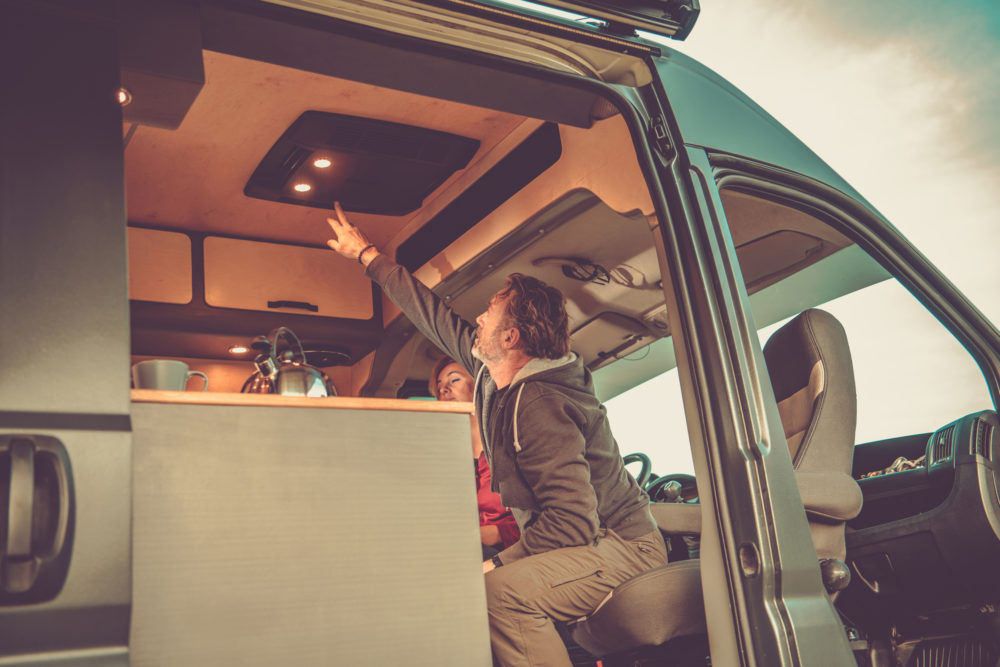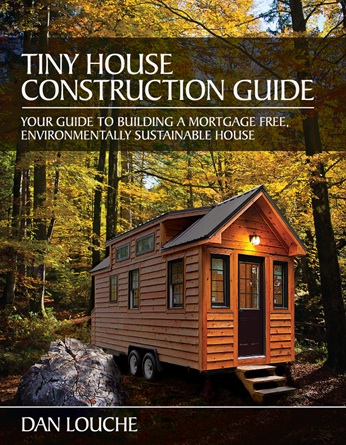How Does Heating An RV With Propane Work?
The RV heater runs on electricity, as well as propane. While the propane fuels the fire in your furnace, the electricity ignites the pilot light and makes sure the furnace (including, the thermostat) is running.

Contents
“An RV heater is a forced air heater. What this means is that when the air in your RV falls below the temperature on the thermostat, hot air is forced through the vents and into the living space. That hot air is created using a flame fed by propane and forced out of the vents in your rig by a blower fan.” (Source: camperfaqs.com.)
You adjust the temperature in the RV by setting the thermostat to heat and then setting the desired temperature on the thermostat unit. Make sure the airflow vents are unobstructed.
When your RV runs out of propane, your heater will stop heating the RV. If you have propane tank gauge indicators, you can check to verify. Ideally, if you have a dual-tank setup, you should have both valves open so that the system switches to the second tank. However, if you run out of propane altogether, this might lead to more serious issues:
“When an RV furnace runs out of propane, the tank pressure will continue to drop until it stops working entirely. Letting the gas run empty is hazardous, as it can lead to leaks, airlocks, rust buildup in the tank, and malfunctioning brake lights. It’s best to keep your propane tank filled to protect your RV from these problems.” (Source: vehq.com)
10 Ways To Stay Warm In An RV Without Using Propane
There are many different ways of staying warm in an RV without propane: from being proactive and insulating your RV well from heat dissipation and cold entering the RV to several different options of creating heat in the RV, they are listed below, along with the explanation of how they work and their benefits:
1. Ceramic Electric Heaters
These heaters are more energy-efficient than regular electric heaters because they do not use electricity to power a fan. They use natural convection to circulate the air and take a bit longer to heat up the space.
2. Infrared Electric Heaters
These heaters use a quartz heating element, are quiet, programmable and actually very efficient.
3. Radiant Heaters
Radiant heaters use electricity to heat up either oil or water that is in the blade cavities; these units use as much electricity as a freezer, which makes them pretty affordable. Furthermore, they are great for people with allergen issues, because they don’t distribute heated dust particles. They are also very quest and deliver heat directly to the radius of the area they are placed in.
4. Oil Heaters
Oil heaters are similar to the radiant heaters. They use about 1,500W of energy. They are great for heating up a large room.
5. Kerosene Heaters
Kerosene heaters should not be used indoors, because they emit fumes that are harmful to people and animals. They are also a high fire hazard when tipped over or if something close by catches on fire, since they have an open flame. Some companies advertise indoor kerosene heaters, but this is for very large areas and one still carries a high risk of fire or carbon-monoxide poisoning.
Some indoor kerosene heaters offer essential safety measures like overheat protection, anti-tip switch, or carbon monoxide monitor. You still should never leave the heater unattended for a long time and use them in areas with proper ventilation.
6. Wood Burning Stoves
Many RV flips and conversions for off-grid full-timers now sport a wood-burning stove.
While it offers emergency heating and true off-grid flexibility, there are some precautions to take when installing and using a wood burning stove:
1. It’s a fire hazard.
2. It’s a bad option for people with smoke allergies.
3. Don’t use an antique stove you find at garage sales (unsafe!)
4. It’s hot to touch (prevent melting damage to walls etc.)
5. It takes a lot of space (compared to other choices) and
6. It’s attached to a fixed location.
Also, when traveling, the vibration can lead to vent leaks etc. These stoves are a good option for larger RV units that are stationary.
7. Heated Flooring
Some luxury RVs come with installed heated flooring while there are also options on the market to install/add-on heated flooring to your unit after-market, like this one: stepheat.com/warmfloor/rv. Most of these run on 12V-48V, depending on your configuration and needs. This is a safe and effective heating source, but it can drain your battery.
8. Insulate Your Windows
There are many ways to reduce loss of heat and prevent cold air from entering your RV: RV windows, doors and slideout areas are the biggest offenders when it comes to heat loss, right after RV flooring.
9. Block Off Your Roof Vents
Roof vent areas are not insulated: they usually only have a rubber seal that avoids moisture from entering the RV, as well as a plastic vent cover that opens manually or mechanically. Therefore, as the heat rises, the vent areas are some of the biggest heat loss areas in an RV. There are ways to block off your roof vents: either by stuffing a folded towel or blanket in the vent cavity, or by purchasing a Roof Vent Insulator and Cover.
10. Use an RV Skirt
The RV loses a lot of heat through the underbelly, because it is built differently than a regular building: the area between the ground and the underbelly is exposed to the elements and the thin RV flooring does not provide proper insulation; thus, the RV becomes a literal icebox.
Some RV manufacturers offer the Arctic Package that has a well-insulated or even heated underbelly and allows RV owners to use their RV year-round in all kinds of weather.
However, some RVers find it beneficial to skirt their RV to block off the airflow between the underbelly and the ground, and to protect the RV underbelly from the elements. There are snap-on skirt kits one can install, while others who stay at a spot longer-term even use straw/hay bales as insulation around the RV.
Another low-budget option includes using cardboard or reflective/foam paneling from a hardware store.
The most effective way to heat an RV is the one that uses the least amount of energy and has the lowest rate of energy waste. With that in mind, the most effective way is a properly insulated RV with a solar option like this (depending on where you are with regard to daily sunlight): Heat Grabber.
Of course, there is always the old-fashioned way of keeping warm with clothing, blankets and a hot water bottle, as well as a nice cup of tea or soup.

What Is The Cheapest Way To Heat An RV?
Below are the heating options listed based on cost, from cheapest to most expensive. Keep in mind that the price of propane and electricity fluctuates greatly based on location and season.
Terracotta tea light heater
This option is a great and cheap alternative to heat a small space. However, because of the open flame, it should only be used when supervised.
Cost: less than $20 (for a terracotta pot and a pack of 100 tealights with 7 hrs of burn time each)
Proper insulation
Cost: anywhere from $10-$100+, this is a good strategy for hot summers and cold winters
Solar heating box
Cost: very inexpensive (approx. $50), free to use (depends on sunlight). However, you have to transport somewhat bulky setup along wherever you travel.
Ceramic heaters
Cost: $0.11/kWh, daily use of 20-70kWh (depends on appliance/heater use); ceramic heaters cost $40-$70. If you are staying at an RV park where electric usage is not metered but included in the daily rate, this heater is a great option.
Electric heat
Cost: $0.11/kWh, daily use of 20-70kWh (depends on appliance/heater use); electric heaters cost $50-$100. If you are staying at an RV park where electric usage is not metered but included in the daily rate, the electric space heater is the most economical solution.
Heated flooring
Cost: $130-$500 for mat PLUS electricity. If you are staying at an RV park where electric usage is not metered but included in the daily rate, the floor heating mat is a great option.
Propane heat
Cost: $2.70-$5/gallon
Solar heat
Cost: can be somewhat pricey with setup, but almost free after that (depending on source of daylight/day), range is from $600-$2,000+ for hardware (pre-install)
FAQs
Can you convert a propane furnace to electric?
Yes, there are options in the RV market that make it possible.
(Source: www.rvcomfortsystems.com.)
Do RV furnaces run on 12-Volt?
Yes, the furnace does run on 12V and is one of the biggest drains on a battery.
How do you reset an RV furnace after running out of propane?
Most of the time, you do not have to reset the furnace. Simply close the propane valve, replace the propane tank, open the gas valve to let the lines flood with propane gas and then turn on the thermostat after a few minutes. Older units might require a re-ignition of a pilot light while newer units might require a clearing of an error code on the control panel or thermostat.
There are more complex ways to reset your furnace, if the furnace won’t restart by itself after the lines are filled with propane:
Step 1: Turn off the circuit breaker box.
Step 2: Turn off the furnace.
Step 3: If you have an older furnace, remove the access panel to the pilot light.
Step 4: Turn off the gas control valve (a round knob found at the top of wall furnaces and at the bottom of floor furnaces).
Step 5: Allow the gas to dissipate for 5 minutes.
Step 6: Turn the gas control valve back on.
Step 7: Use a lighter to ignite the pilot light.
Step 8: Turn the breaker back on, then turn the furnace back on as well. (Source: vehq.com)
Can you use a space heater in an RV?
Yes, you can use a space heater in an RV. A couple of things to consider, however: make sure that you keep plenty of space between a heater and any obstruction. Also, invest in a space heater with an auto-shut-off when tipping over. If you are staying at an RV park with metered electric, this option might be pricey, so only use the heater during the daytime (when supervised) and at RV parks where electric use is included in your park fees.
Can you use a portable heater in an RV?
Yes, a small propane space heater is a good choice for anyone boondocking or if there is no electricity. Just like with the electric space heater, make sure to take safety precautions and be alert when using it.
Can you heat an RV with solar power?
Yes, there are several different options for solar powered heating for your RV. For example, “A solar heating box is another option for heating your camper without electricity. They can be installed through a window on your stationary RV. The adjustable reflective panel that harnesses sunlight lays against your coach. They are affordable to build and you can find instructions on how to build them online.” (Source: campersmarts.com.)



